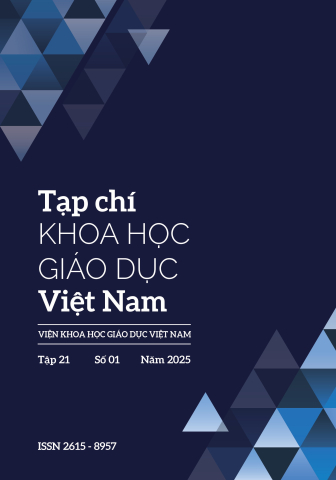[1] American Management Association, (2014), Employers Need a Highly Skilled Workforce to Keep Up with the Fast Pace of Change in Business Today, 2012 Critical Skills Survey, https://www.amanet. org/assets/1/6/2012-critical-skills-survey.pdf
[2] Plummer, M, (2019), A Short Guide to Building Your Team’s Critical Thinking Skills, Harvard Business Review
[3] Ennis, R. H, (1962), A Concept of Critical Thinking. Harvard Educational Review
[4] McPeck, J. E, (1981), Critical Thinking and Education. Routledge Library Editions: Philosophy of Education
[5] Paul, R., Elder, L, (2007), Critical Thinking - Concepts and Tools, The Foundation for Critical Thinking
[6] Scriven, M. & Paul, R, (1987), Critical Thinking and Education Reform, The 8th Annual International Conference
[7] Kahane, H, (1988), Logic and Contemporary Rhetoric: The Use of Reason in Everyday Life, Wadsworth Publishing Company
[8] Dewey, J, (1910), How we think, D C Heath, https:// doi.org/10.1037/10903-000
[9] Halpern, D. F, (1998), Teaching Critical Thinking for Transfer Across Domains, The American Psychological Association
[10] Govier, T, (1988), Selected Issues in Logic and Communication, Wadsworth Pub Co.
[11] Scriven, M, (1976), Reasoning, New York: McGrawHill
[12] Brookfield, S, (1987), Developing Critical Thinkers. Challenging adults to explore alternative ways of thinking and acting, Jossey-Bass Publishers
[13] Lipman, M, (1988), Critical Thinking: What Can It Be? Educational Resources Information Center
[14] Paul, R, (1992), Critical thinking: What, why, and how, Educational Resources Information Center
[15] Nosich, G, (2012), Learning to Think Things Through: A Guide to Critical Thinking Across the Curriculum, Buffalo State University
[16] Facione, P. A, (1990), Critical thinking: A statement of expert consensus for purposes of educational assessment and instruction, California Academic Press.
[17] Smelko, B. & Smelko, W, (2013), DEBATE 101: Everything You Need to Know About Policy Debate: You Learned Here, National Speech & Debate Association.
[18] Snider, A. & Schnurer, M, (2006), Many Sides: Debate Across the Curriculum, International Debate Education Association
[19] Silberman, M. L, (1996), Active Learning, 101 active students ways, Temple University
[20] Suyatno, (2009), Membedah Pembelajaran Inovatif. masmedia Buana Pustaka, Sidoarjo.
[21] Fukuda, S, (2003), Attitudes toward argumentation in college EFL classes in Japan, Proceedings of the First Asia TEFL International Conference.
[22] Czech Debate Association, (2019), Karl Popper Debate Programme Rules, https://debatovani.cz/ wp-content/uploads/2018/11/181119_KP-debateprogramme-rules.pdf.
[23] Register, D, (2016), Debate in the Classroom, https:// cce.bard.edu/files/Debate-in-the-Classroom.pdf
[24] Benis, S., Stein, S, (2009), Debate Across the Curriculum Teacher Handbook, Boston Debate League, http://www.bostondebate.org/wpcontent/uploads/2009/10/1-DAC-TeacherManual.pdf.
[25] OCDL, (2020), How to debate guide, Orange County Debate League, https://orangecountydebateleague 246189848.files.wordpress.com/2020/09/2020- 2021-how-to-debate-guide.pdf
[26] Fuad, J., Ardana, I. W., Kuswandi, S. D, (2015), Increasing Critical Thinking Skill through Class Debate, 1st UPI International Conference on Sociology Education.


